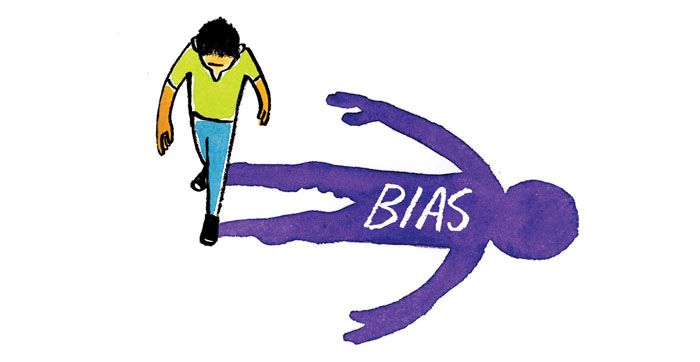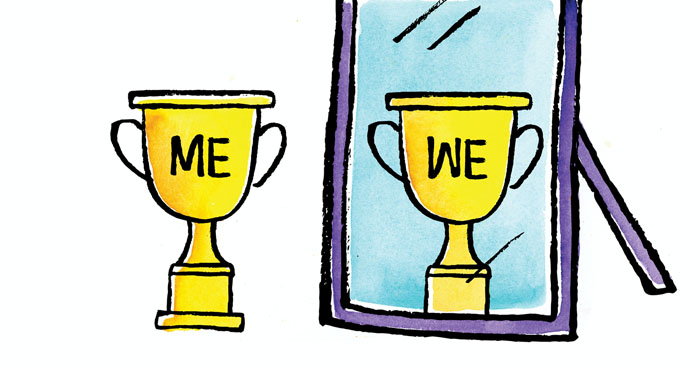
The new generation of job seekers is pushing the boundaries of diversity, equity, and inclusion (DE&I) in the workplace, which means effectively attracting a diverse workforce is critical for long-term success. In fact, 83% of Gen Z candidates said that a company’s commitment to diversity and inclusion plays an important role when choosing an employer. With Gen Z set to make up roughly 30% of the global workforce, it’s crucial HR leaders revisit their diversity recruiting strategy.
According to Aptitude Research, nearly 90% of companies are concerned with reducing unconscious bias in their talent acquisition process. Many organizations like yours focus on training programs to improve DE&I in order to reduce this bias. While these programs are great for providing insight and education, they often just check a box instead of addressing the fundamental problem.
Embedding DE&I into your recruitment process is essential to attracting and retaining top talent, especially as the new generation of diverse candidates enters your candidate pools. Let’s explore 5 actionable strategies you can implement within your organization to recommit to diversity, equity, and inclusion in your hiring process:
1. Remove Barriers to Entry
Promoting diversity within your hiring process starts with removing barriers to entry that may be preventing a large pool of candidates from applying to your company. This includes everything from using more inclusive language in your job postings to offering flexible interviews and remote work opportunities.
Audit Job Postings
Carefully review your job descriptions to remove potentially targeted or exclusionary language that might deter certain groups from applying. Here is some language to be mindful of:
- Gendered: the use of “he” and ”she.” Opt for more gender-neutral terms like “you” and “they”.
- Age-exclusive: targeted language to potentially exclude older or younger candidates. Discuss qualities related to the job in a way that removes bias. For example, saying a candidate should “demonstrate maturity” vs. “mature candidate preferred”.
- Othered: words like “able-bodied” and “healthy” can deter candidates with physical disabilities from applying. Often, these words are not actually descriptors of the job requirements.
Consider Virtual & Remote Options
One way to easily enable access is by offering virtual interviews and remote work opportunities. Not all organizations have the ability to work remotely, but virtual interviews are a great way to remove potential barriers. According to Handshake Network Trends, (55%) of women prefer virtual interviews compared to (41%) of men. The confidence gap deters many women from pursuing job opportunities and promotions and virtual interviews help change those dynamics.
2. Create Inclusive Brand Interactions
Before you even connect with them, potential candidates see your brand’s inclusivity. Job seekers spend significant time researching organizations, reading employee reviews, scrolling their social media, and ruling out the ones that lack DE&I. It’s essential to ensure every interaction job seekers have with your brand is inclusive.
Examine Brand Messaging
Evaluate your company branding and outward-facing messaging thoroughly with a DE&I lens. Does it show you not only embrace but celebrate your diverse team throughout the organization, by making employees feel a sense of belonging? Take a look at the following areas:
- Website
- Social media
- Company messaging and values
- Images and photography
- Job postings
- Content - blogs, newsletters, podcasts, etc
Assemble Diverse Interview Panels
According to Aptitude Research, 49% of companies use a diverse panel of interviewers during the hiring process. Creating more diverse interview processes benefits both the job seeker and your company.
On the candidate side, you can attract a larger pool of talent by making underrepresented groups more comfortable. On the business side, you not only get an opportunity to showcase your commitment to DE&I but also make informed hiring decisions. By adding a new perspective, diverse interview panels allow you to think more holistically and inclusively about potential candidates.
3. Measure and Share Your DE&I Impact
You need to make data-informed decisions when it comes to DE&I. That includes deciding which metrics to measure, how often you measure them, and how to share the results. Some DE&i metrics measure fairness in the workplace, brand strengths, overall employee satisfaction, and even financial return on diversity initiatives.
Here are some ways HR executives currently use data to drive informed DE&I decisions:
- Establish your organization’s baseline to set achievable goals
- Measure progress on a consistent basis
- Communicate progress effectively
- Identify areas for improvement and intervention
- Hold yourself and the organization accountable
Sharing your goals and strategies can show potential candidates your commitment to DE&I. Be transparent about where you currently stand and where you want to be to highlight that diversity, equity, and inclusion are ingrained in your company values.
This is also a good chance to collect feedback from your candidates about DE&I during the hiring process. Currently, only 39% of organizations are collecting and using candidate feedback to make more informed DE&I decisions. By using both current data and this information from fresh perspectives, you can optimize and strengthen your DE&I impact.
4. Commit to Equity (And Show It!)
To create a lasting DE&I culture within your organization, you need to think about what the future should look like. Did you know that only 35% of young adult workers, many of whom were people of color, claimed their employer shared advancement and promotion opportunities with them? Or that women ask for raises at the same rate as men, but receive them 7% less often? To create diverse future leaders, focus on developing early talent across the entire organization.
Define Equitable Standard Operating Procedures
Dedicated comprehensive operating procedures for recruitment, hiring, and other HR tasks can help promote equity and inclusion throughout your organization. These SOPs will ensure candidates and employees are not excluded from career advancement and promotion opportunities, promote transparency throughout the organization, and highlight your commitment to DE&I.
Consider creating defined SOPs for the following processes:
- Interview + Onboarding
- Promotions
- Salary/Bonuses Transparency
5. Utilize DE&I-Focused Partnerships
The right background screening provider can help you easily integrate diversity, equity, and inclusion into your recruitment and hiring processes so you can focus on finding candidates for your organization. Here are some of the ways a screening partner can help your organization reduce bias:
- Adjudication matrices - only see search results that are relevant to the position
- Fast and accurate screening conducted by unbiased specialists
- Expert guidance on hiring best practices
- Compliance and legislation monitoring
Conclusion
Incorporating these key strategies can help your organization recommit to diversity, attract a larger pool of qualified candidates, and reduce bias in your recruitment and hiring processes.
Verified First and Breezy work together seamlessly, making it super easy to order, track, and manage background screening solutions from Verified First. Plus, you can effortlessly keep an eye on your DE&I initiatives within Breezy's ATS platform. It's a powerful combo that takes the hassle out of the whole process.





